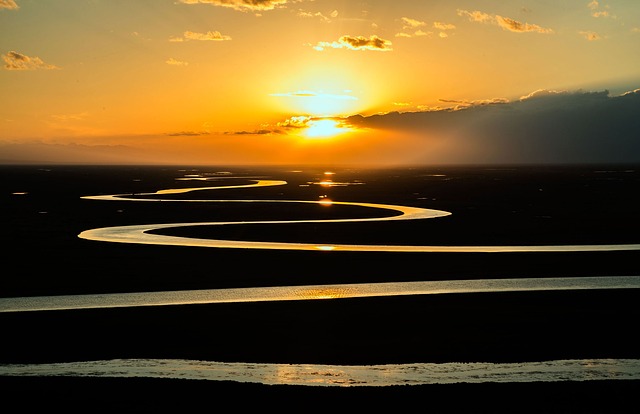Could Making Rivers Bend and Follow the Natural Flow of the Landscape?
Rivers are an integral part of any landscape, shaping the terrain they flow through and providing vital water resources. However, many rivers around the world have been altered, straightened, and channelized to suit human needs. This human intervention often disrupts the natural flow of rivers and has far-reaching consequences for ecosystems and communities. The question arises: could making rivers bend and follow the natural flow of the landscape provide a sustainable solution for a healthy and functional ecosystem?
Straightening rivers is a practice that has been carried out for centuries, primarily for agricultural and navigational purposes. However, this engineering approach has proven to be problematic. Straightening rivers reduces meandering and disrupts natural sediment transport, leading to increased erosion in some areas and sedimentation in others. This imbalance affects the integrity of river ecosystems by altering habitats and threatening biodiversity.
Furthermore, channelization of rivers can exacerbate the impacts of flooding. Straight, narrow channels with high banks limit the capacity of rivers to accommodate excess water during heavy rainfall or snowmelt. As a result, downstream areas become more prone to flooding, leading to property damage, displacement, and even loss of life. Restoring rivers to follow their natural paths can increase their flood-carrying capacity, mitigating the risk of floods and safeguarding communities.
Restoration projects across the world have demonstrated the positive impact of making rivers bend and follow the natural flow of the landscape. By allowing rivers to meander, wind, and follow their historical paths, these projects improve water quality, regulate natural habitats, and enhance biodiversity. For instance, the Elwha River Restoration in Washington state, USA, involved the removal of two dams and allowed the river to regain its meandering course. Within a few years, salmon populations rebounded, showing how restoring natural flows can revitalize entire ecosystems.
Implementing river restoration projects, however, requires careful planning and consideration of various factors. Stakeholder engagement and collaboration are crucial to ensuring successful outcomes. Restoration efforts should consider the needs of local communities, agriculture, recreation, and industry. Balancing these considerations with ecological restoration can lead to multiple benefits for both humans and nature.
Additionally, river restoration often involves restoring riparian vegetation, which helps stabilize riverbanks and reduces erosion. The intricate root systems of trees and plants provide shade, regulate water temperature, and filter pollutants, improving water quality. This, in turn, benefits fish populations and other aquatic organisms that rely on clean water for their survival.
Furthermore, reconnecting rivers with their floodplains through natural meandering can create valuable wetland habitats, which are some of the most biologically diverse ecosystems on Earth. Wetlands play a crucial role in filtering water, recharging groundwater supplies, and providing homes for a wide range of plant and animal species. By restoring rivers to follow their natural flows, we not only enhance natural ecosystems but also build resilience against the impacts of climate change, such as droughts and extreme rainfall events.
In conclusion, making rivers bend and follow the natural flow of the landscape holds great promise for restoring and preserving the health and functionality of our river ecosystems. By allowing rivers to meander and reconnect with their floodplains, we can improve water quality, enhance biodiversity, and reduce the risk of flooding. However, it is vital to approach these restoration projects with careful planning, stakeholder engagement, and consideration of local needs. By embracing a holistic approach to river restoration, we can ensure a sustainable future for rivers and the communities that depend on them.
